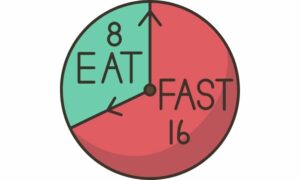Intermittent fasting is a highly effective dietary approach that focuses on the timing of eating by fasting and eating at set times. It is crucial to note that any evaluation of the effectiveness of intermittent fasting should be based solely on objective evidence rather than personal opinions or subjective experiences. This approach sets specific time intervals for when to fast and when to eat, with the most commonly preferred model being to fast for 16 hours and then eat at regular intervals for the next 8 hours. The duration of fasting can be easily adjusted according to the individual’s lifestyle, habits, and health status. To achieve optimal health outcomes, pursue an intermittent fasting diet under the guidance of a qualified dietitian.
What is Intermittent Fasting?
Intermittent fasting is a highly effective dietary approach that involves altering the pattern of daily food consumption, rather than following a traditional diet programme. This can be easily achieved by either abstaining from food for certain periods of time during the day or by limiting energy intake on specific days of the week.
How Does Intermittent Fasting Work?
The most popular form of intermittent fasting is fasting for 16 hours and then eating for a period of 8 hours. During this period, it is advisable to drink calorie-free and sugar-free liquids between meals. In the 8 hours after the first meal, no solid food is allowed, but liquids are permitted. Snacks may be optional, especially for those who find the fasting period between morning and evening difficult.
After the evening meal, fluid intake can continue, but no solid food is allowed until the next morning meal. This 16-hour fasting period also includes sleeping hours. Intermittent fasting can be practised for periods ranging from a few days to a year and can be done regularly for two days a week, once a month or for a week, depending on the individual’s preference. An intermittent fasting programme should be started taking into account the person’s lifestyle, health status and habits.
Some common types of intermittent fasting diets include
- Time-restricted diet (e.g. 16/8 or 14/10)
- Feeding two days a week (5/2 method)
- Fasting every other day
- 24-hour fasting (food-abstinence-meal)
Intermittent Fasting Schedule
Intermittent Fasting 16/8
The 16:8 model of the intermittent fasting diet involves fasting for 16 hours a day and then consuming food and drink in accordance with the diet plan within the specified 8 hours. This 16-hour fasting period includes sleeping hours. An alternative to this model is to fast for 14 hours and then eat during a 10-hour period. For example, in the 16:8 model, meals are usually eaten from 10 am to 6 pm, whereas in the 14/10 model, there is a feeding period from 9 am to 7 pm.
5/2 method
In the 5:2 model of intermittent fasting, the normal eating pattern is maintained for five days of the week, with a fasting-like regime for the remaining two days. However, this does not mean that the two days are completely fasted. During this period, a very low calorific intake is prescribed: around 500 calories for women and 600 calories for men.
24-hour fasting (Eat-Stop-Eat method)
The “eat-stop-eat” rule aims to fast for 24 hours, but this is usually only done one or two days a week. If you have eaten your last meal of one day at 19.00 p.m., you should not eat until 19.00 p.m. the following day. Because this method of intermittent fasting requires a long period of fasting, it may cause side effects such as headaches, dizziness or irritability. People who follow “eat-stop-eat” should continue with their normal diet on the days outside the 24-hour fasting period.
Alternate day fasting
Another variant of intermittent fasting is to consume a certain proportion of calories on fasting days and return to normal eating habits on other days. In this method, only a part of the daily calorie intake is consumed on fasting days, while non-fasting days continue in accordance with normal eating habits.
Intermittent Fasting Benefits
Intermittent fasting can help weight loss by reducing calorie intake. Studies have shown that intermittent fasting for several weeks can lead to short-term weight loss, but there is insufficient data on long-term weight loss. In addition, some people may experience an increase in the hunger hormone ghrelin during periods of fasting, which may lead to overeating behaviour. Therefore, healthy eating and calorie control are important when practising intermittent fasting. Clinical studies have demonstrated several health benefits of intermittent fasting:
- Reduced blood pressure
- Reduction in signs of inflammation
- Improvement in blood cholesterol and lipid levels
- Decreased heart rate at rest
- Improvement of intestinal health
- Improvement in sleep patterns
It is not clear whether these health benefits are due to the fasting regime or to general calorie restriction. Chronic inflammation has been linked to conditions such as heart disease, type 2 diabetes, some types of cancer, inflammatory bowel disease and depression. Research has shown that intermittent fasting can lower blood markers of inflammation, which may be useful in the treatment of inflammatory conditions. Intermittent fasting may offer additional advantages in improving insulin sensitivity and abdominal obesity compared to traditional low-calorie diets. While some benefits of intermittent fasting may be related to the effects of weight loss, it may additionally trigger the process of autophagy. Autophagy is a process by which cells break down unnecessary or damaged parts of cells to create new, healthy cells. In situations of hunger and stress, autophagy accelerates, providing alternative energy sources for cells. However, it is not known how long autophagy can be increased by fasting. Since autophagy slows down with age, the benefits of fasting may be more pronounced in older individuals.
Alternative Weight Loss Techniques
Is sport and a healthy diet the only way to lose weight?
In fact, this is true for individuals with a certain BMI level. However, for some individuals with a certain BMI level, sports and healthy nutrition are insufficient. First of all, let’s start from here, every person has a body mass index. Weight level is measured according to this index. A person’s weight values are as follows
- 18.5 kg/m2 and lower values = Thin
- Values between 18.5 and 24.9 kg/m2 = normal weight
- Values between 25.0 and 29.9 kg/m2 = Overweight
- Values between 30.0 and 34.9 kg/m2 = Grade 1 obesity
- Values between 35.0 and 39.9 kg/m2 = grade 2 obesity
- 40 kg/m2 and above = grade 3 obesity
And what is your level? If you are overweight and at grade 1 obesity, intermittent fasting may be effective for you. A thin and normal weight individual does not need to do intermittent fasting, but of course it is a matter of preference. But if you are in the 2nd degree and 3rd degree obesity level, maybe you can try different weight loss techniques. Especially with a surgical operation, you can lose weight quickly and easily. So what are these fast weight loss treatments? Here is the full list;








